#anthropology
Text

Follow For More ❤️
#nostalgia#memes#cute#meme#jokes#dank memes#funny#love#animals#cats#cats of tumblr#haha#humor#lol#kawaii#grunge#goth#aesthetic#anthropology#artists on tumblr#art#my art#wholesome#writers on tumblr#writing#nature#photographers on tumblr#puns#pets#photography
132 notes
·
View notes
Text
#dragon#daemon x rhaenyra#tw weight#anthropology#jack falahee#blackpink lisa#Brian David Gilbert#funny post#low cal diet#60s#formula one#Tommyinnit
133 notes
·
View notes
Text
#blue#emily prentiss#louis tomlinson#tyga#methamaphine#dragon#daemon x rhaenyra#anthropology#blackpink lisa#funny post#low cal diet#malay hijab#60s
130 notes
·
View notes
Text
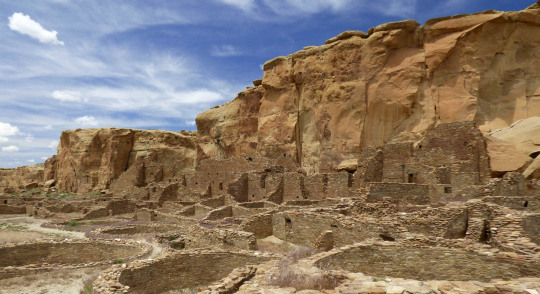

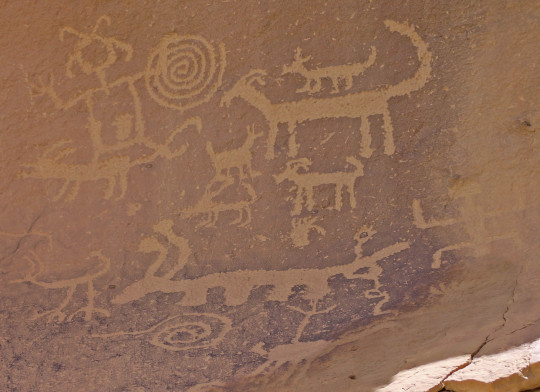


Chaco Canyon is one of the most inaccessible National Parks in the country. Although it is well-known, there is no easy way to get there and there are no amenities once you arrive. The closest town is 60 miles away. There’s a gas station on the main road, near where you turn off on Highway 550. That’s the last opportunity for gas, water, snacks, sunscreen and supplies.
Furthermore, there is no good road to Chaco Canyon. Bluntly, it feels like an Indiana Jones expedition the moment you turn off the main road. The jolting journey evolves from a deceivingly decent dirt road to not so good to face rattling off your skull for a couple of miles. Also, there's a large wash on the way, which can become impassable during heavy storms. Don’t be daring, because there’s no cell phone reception either.
#Native American#New Mexico#roadtrip#NativeAmerican#history#heritage#tradition#culture#daytrip#virtualtravel#instatravel#travelgram#NewMexico#historygeek#offthebeatentrack#leavenotrace#joltyourjourney#earthshotz#AncestralPuebloan#ChacoCanyon#indigenous#archaeology#anthropology#instagramersnm#igersnm
45 notes
·
View notes
Text

Entering the anthropology department at my extremely religious university
From Sweetie, Sweetie, Sweetie by Damjuckdan and NOK
#yes#it was BYU#but don't tell anyone#anthropology#cultural relativism#comedy#humor#webtoon#webtoons#manga#funny#memes#meme#joke#mangamemes#mormon
22 notes
·
View notes
Text
AGRICULTURAL COMPLEX BATTLE GROUP A
Great Lakes Agricultural Complex
This is an agricultural complex situated around the North American Great Lakes. It is characterized by their use of polycultural planting of corn, squash, and beans to maximize outputs (also termed Three Sisters by English settlers). This agricultural practice is common among the Hodinǫ̱hsǫ́:nih Confederacy prior to the arrival of white settlers in the continent.
Andean Agricultural Complex
The Andean agricultural complex was widespread throughout the Andean mountains; especially by the K‘ichwa-speaking Tawantinsuyu. However, Andean agriculture dates back to long before that, as the staple crop of the Andean agricultural complex, potatoes, were domesticated before 6000~ BP.
The Andean agricultural complex is characterized by their use of irrigation systems that allow for heat to be transferred from the water to the ground at night to prevent frost (due to diurnal gradient in the Andean mountains). Moreover, these irrigation channels also allow for fish and algae to build up, allowing for the water to be nitrogen-rich and able to be used as a natural fertilizer.
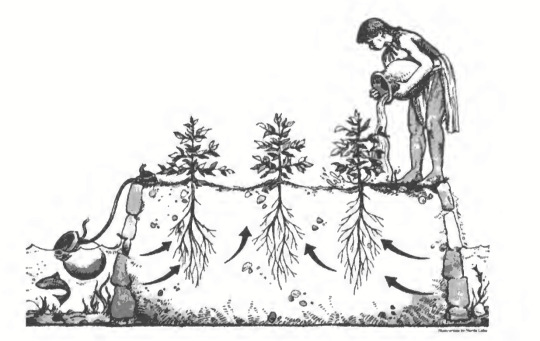
The Andean agricultural complex also makes use of terracing (as shown below) to decrease surface runoffs on rough mountainous slopes.
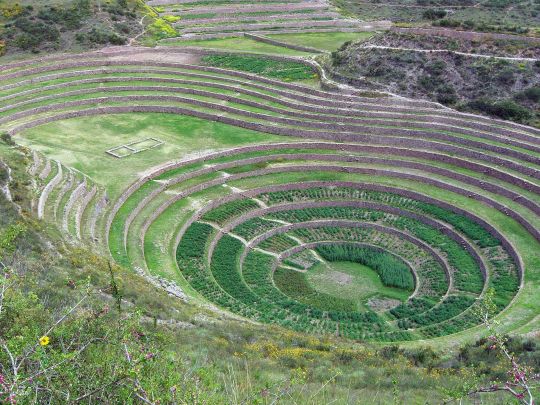
Sepik River Agricultural Complex
The Sepik River is a river on the north coast of Papua, and not the first place that many think of with complex agricultural systems. However, the Sepik River boasts a complex system of agriculture based around yams. The Sepik and Amogu floodplains deposit enough sediment in its streams that yams are readily available through intensive farming. As yams require a proper drainage system, yams are planted before the wet season starts. Moreover, yams are culturally salient in the Sepik belief systems, as they observe taboos on yams and elevate its sacredness. Almost all Sepik River cultures have ritual exchange systems based around yams.
Vaupés Agriculture
Similar to Papuan and Andean agriculture, Amazonian agriculture relied on the use of tubers. In the Amazon, manioc horticulture was the most prevalent system of agriculture spread throughout the river basin. More recent crop arrivals, such as bananas and chili are also grown in the Vaupés
They utilize the Vaupes tributary of the Amazon provide a major source of sediment deposit and to the Vaupes peoples here.
However, the social dynamics in the Vaupes is of most interest. As Patience Epps outlines, Vaupes agriculture/horticulture is mutualistic between the "forest peoples" such as the Hupd’əh, who trade with the "river people" agriculturalists, like Tariana and Tukano peoples—who both benefit from each other's product outputs.
28 notes
·
View notes
Text
To this day people will cry over the knowledge and works destroyed when the library of Alexandria was burned down.
And yet no tears are shed as Palestinian archives and libraries are bombed.
Saint Porphyrius Church, a structure built in the 5th century and the 3rd oldest church in the world has been bombed.
It's not an accident.
Israel aren't simply killing Palestinians, they are trying to erase that there ever were Palestinians in the first place.
Destroying their livelihoods, trying to to destroy their culture and history and pretend this land was never there's.
It's easy to deny someone's existence when there's no record of them.
Which is why it's so important to look at the atrocities and bear witness to what's happening.
But to also recognise that Palestine is more than it's suffering.
There is a living breathing culture, of art, history, literacy which all come from the Palestinians.
Traditions they've carried for centuries.
So while we mourn the dead, we shall fight for the living. Fight for the preservation of their crafts, amplify their voices as they speak on their culture.
Palestinian history and culture is alive. And no matter how much the world wants to erase that, they cannot and will not.
59K notes
·
View notes
Text




45K notes
·
View notes
Text
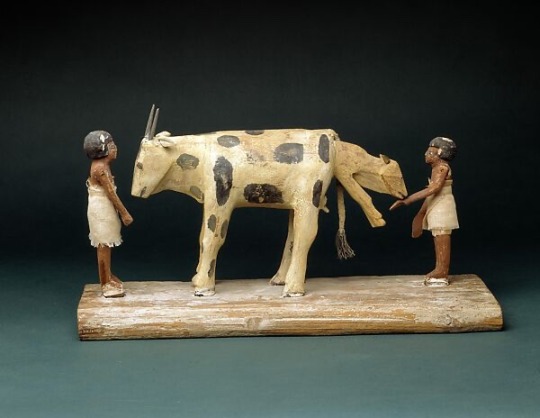
I can’t tell you how much I love this artwork from ancient Egypt (the Middle Kingdom). People have been raising cattle and practicing animal husbandry for so long, that there is something almost inherently human about this scene.
Everyone in the field of veterinary medicine or agriculture knows the feeling of staying up late with a laboring animal trying to make sure both mom and baby are okay. Delivering a calf is often physically and emotionally exhausting work that takes enormous patience and learned skill. It requires a unique balance of physical strength and gentleness to do correctly. There is no feeling quite like getting that baby out and everyone is okay. I’m certain ancient people must have felt the same way, and I wonder if the artist knew this feeling firsthand. I wonder if those humans depicted were people the artist knew, if the cow and calf maybe were as well.
17K notes
·
View notes
Text
Genocide experts warn that India is about to genocide the Shompen people
Who are the Shompen?
The Shompen are an indigenous culture that lives in the Great Nicobar Island, which is nowadays owned by India. The Shompen and their ancestors are believed to have been living in this island for around 10,000 years. Like other tribes in the nearby islands, the Shompen are isolated from the rest of the world, as they chose to be left alone, with the exception of a few members who occasionally take part in exchanges with foreigners and go on quarantine before returning to their tribe. There are between 100 and 400 Shompen people, who are hunter-gatherers and nomadic agricultors and rely on their island's rainforest for survival.

Why is there risk of genocide?
India has announced a huge construction mega-project that will completely change the Great Nicobar Island to turn it into "the Hong Kong of India".
Nowadays, the island has 8,500 inhabitants, and over 95% of its surface is made up of national parks, protected forests and tribal reserve areas. Much of the island is covered by the Great Nicobar Biosphere Reserve, described by UNESCO as covering “unique and threatened tropical evergreen forest ecosystems. It is home to very rich ecosystems, including 650 species of angiosperms, ferns, gymnosperms, and bryophytes, among others. In terms of fauna, there are over 1800 species, some of which are endemic to this area. It has one of the best-preserved tropical rain forests in the world.”
The Indian project aims to destroy this natural environment to create an international shipping terminal with the capacity to handle 14.2 million TEUs (unit of cargo capacity), an international airport that will handle a peak hour traffic of 4,000 passengers and that will be used as a joint civilian-military airport under the control of the Indian Navy, a gas and solar power plant, a military base, an industrial park, and townships aimed at bringing in tourism, including commercial, industrial and residential zones as well as other tourism-related activities.
This project means the destruction of the island's pristine rainforests, as it involves cutting down over 852,000 trees and endangers the local fauna such as leatherback turtles, saltwater crocodiles, Nicobar crab-eating macaque and migratory birds. The erosion resulting from deforestation will be huge in this highly-seismic area. Experts also warn about the effects that this project will have on local flora and fauna as a result of pollution from the terminal project, coastal surface runoff, ballasts from ships, physical collisions with ships, coastal construction, oil spills, etc.
The indigenous people are not only affected because their environment and food source will be destroyed. On top of this, the demographic change will be a catastrophe for them. After the creation of this project, the Great Nicobar Island -which now has 8,500 inhabitants- will receive a population of 650,000 settlers. Remember that the Shompen and Nicobarese people who live on this island are isolated, which means they do not have an immune system that can resist outsider illnesses. Academics believe they could die of disease if they come in contact with outsiders (think of the arrival of Europeans to the Americas after Christopher Columbus and the way that common European illnesses were lethal for indigenous Americans with no immunization against them).
And on top of all of this, the project might destroy the environment and the indigenous people just to turn out to be useless and sooner or later be abandoned. The naturalist Uday Mondal explains that “after all the destruction, the financial viability of the project remains questionable as all the construction material will have to be shipped to this remote island and it will have to compete with already well-established ports.” However, this project is important to India because they want to use the island as a military and commercial post to stop China's expansion in the region, since the Nicobar islands are located on one of the world's busiest sea routes.
Last year, 70 former government officials and ambassadors wrote to the Indian president saying the project would “virtually destroy the unique ecology of this island and the habitat of vulnerable tribal groups”. India's response has been to say that the indigenous tribes will be relocated "if needed", but that doesn't solve the problem. As a spokesperson for human rights group Survival International said: “The Shompen are nomadic and have clearly defined territories. Four of their semi-permanent settlements are set to be directly devastated by the project, along with their southern hunting and foraging territories. The Shompen will undoubtedly try to move away from the area destroyed, but there will be little space for them to go. To avoid a genocide, this deadly mega-project must be scrapped.”
On 7 February 2024, 39 scholars from 13 countries published an open letter to the Indian president warning that “If the project goes ahead, even in a limited form, we believe it will be a death sentence for the Shompen, tantamount to the international crime of genocide.”
How to help
The NGO Survival International has launched this campaign:
From this site, you just need to add your name and email and you will send an email to India's Tribal Affairs Minister and to the companies currently vying to build the first stage of the project.
Share it with your friends and acquittances and on social media.
Sources:
India’s plan for untouched Nicobar isles will be ‘death sentence’ for isolated tribe, 7 Feb 2024. The Guardian.
‘It will destroy them’: Indian mega-development could cause ‘genocide’ and ‘ecocide’, says charity, 8 Feb 2024. Geographical.
Genocide experts call on India's government to scrap the Great Nicobar mega-project, Feb 2024. Survival International.
The container terminal that could sink the Great Nicobar Island, 20 July 2022. Mongabay.
[Maps] Environmental path cleared for Great Nicobar mega project, 10 Oct 2022. Mongabay.
#shompen#genocide#stop genocide#india#indigenous#indigenous peoples#indigenous rights#human rights#anthropology#stateless nations#end occupation#andaman and nicobar islands#nicobar islands#great nicobar#💬#asia#geopolitics#ecocide#sustainability
17K notes
·
View notes
Text
you have to let "dennys parking lot at 3 am" go. you have to think independently. you have to come up with your own strange places, and indeed your own strange times to be there. there's authenticity in that
41K notes
·
View notes
Text
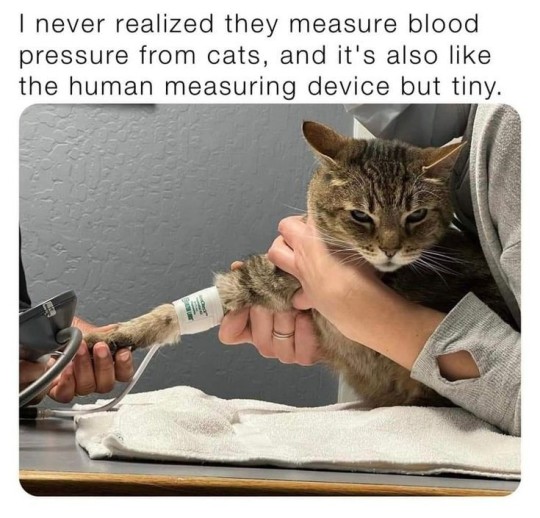
Follow For More ❤️
#nostalgia#memes#cute#meme#jokes#dank memes#funny#love#animals#cats#cats of tumblr#kawaii#aesthetic#haha#humor#lol#nature#photographers on tumblr#puns#pets#photography#artists on tumblr#art#my art#anthropology#wholesome#writers on tumblr#writing#grunge#goth
55 notes
·
View notes
Text
My anthropologist partner dislikes the 1.20 update because it refers to pieces of pottery as "shards" rather than the correct term, "sherds"
46K notes
·
View notes
Text

2,300-Year-Old Plush Bird from the Altai Mountains of Siberia (c.400-300 BCE): crafted with a felt body and reindeer-fur stuffing, all of which remains intact
This artifact was sealed within the frozen barrows of Pazyryk, Siberia, for more than two millennia, where a unique microclimate enabled it to be preserved. The permafrost ice lense formation that runs below the barrows provided an insulating layer, preventing the soil from heating during the summer and allowing it to quickly freeze during the winter; these conditions produced a separate microclimate within the stone walls of the barrows themselves, thereby aiding in the preservation of the artifacts inside.
This is just one of the many well-preserved artifacts that have been found at Pazyryk. These artifacts are attributed to the Scythian/Altaic cultures.
Currently housed at the Hermitage Museum.
#archaeology#anthropology#history#artifact#artifacts#siberia#scythians#archeology#museum#amazing#interesting#stuffed animals#ancient history#prehistoric#crafting#felt art#art#prehistoric art#hermitage museum#human nature
45K notes
·
View notes
Text
Analysis of data from dozens of foraging societies around the world shows that women hunt in at least 79% of these societies, opposing the widespread belief that men exclusively hunt and women exclusively gather. Abigail Anderson of Seattle Pacific University, US, and colleagues presented these findings in the open-access journal PLOS ONE on June 28, 2023.
A common belief holds that, among foraging populations, men have typically hunted animals while women gathered plant products for food. However, mounting archaeological evidence from across human history and prehistory is challenging this paradigm; for instance, women in many societies have been found buried alongside big-game hunting tools.
Some researchers have suggested that women's role as hunters was confined to the past, with more recent foraging societies following the paradigm of men as hunters and women as gatherers. To investigate that possibility, Anderson and colleagues analyzed data from the past 100 years on 63 foraging societies around the world, including societies in North and South America, Africa, Australia, Asia, and the Oceanic region.
They found that women hunt in 79% of the analyzed societies, regardless of their status as mothers. More than 70% of female hunting appears to be intentional—as opposed to opportunistic killing of animals encountered while performing other activities, and intentional hunting by women appears to target game of all sizes, most often large game.
The analysis also revealed that women are actively involved in teaching hunting practices and that they often employ a greater variety of weapon choice and hunting strategies than men.
These findings suggest that, in many foraging societies, women are skilled hunters and play an instrumental role in the practice, adding to the evidence opposing long-held perceptions about gender roles in foraging societies. The authors note that these stereotypes have influenced previous archaeological studies, with, for instance, some researchers reluctant to interpret objects buried with women as hunting tools. They call for reevaluation of such evidence and caution against misapplying the idea of men as hunters and women as gatherers in future research.
The authors add, "Evidence from around the world shows that women participate in subsistence hunting in the majority of cultures."
22K notes
·
View notes
Text
"Humans out-competed other hominids because of tendencies toward violence and domination." Ummmm


(X, X)
Early Man be fishin' (and being eaten)
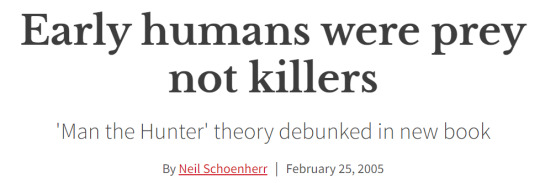

(X, X)

Wisdom of the Ancestors like: if you have a rival, have you considered kissing them?
#anthropology#obviously it was a mix of traits and hunting was big#but also? boning your rivals and rival groups and making art
16K notes
·
View notes